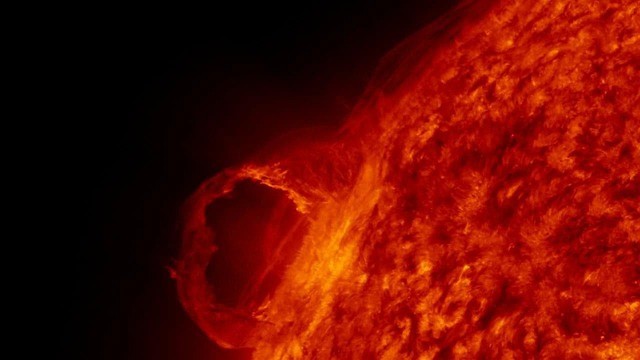A solar storm alert warns of an increased solar flare risk this week amid several active sunspots observed from our Sun, according to the National Oceanic and Atmospheric Administration (NOAA). Based on the alert, there is a relatively higher chance for the occurrence of X-flares or X-class solar flares, the strongest category for such type of solar storm.
Sunspots are said to be the gateways of solar flares, an intense outburst of electromagnetic radiation emanating from the Sun's atmosphere. In the past, flares have been observed by astronomers to be common in active regions, where other solar explosions may occur like coronal mass ejections (CMEs) or other space weather events.
Solar Storm Alert

The NOAA's Space Weather Prediction (SWPC) stated that there was a 15% chance of X-flares and a 40% chance of M-flares on Wednesday, September 27. More than a week ago, the reported chances for X-class solar flares were only around 5%.
The increased solar flare risk is related to the current Solar Cycle 25, wherein US space weather authorities in previous year predicted that solar activities will increase by the year 2025. These solar events are governed by the cycle's solar minimum and solar maximum, in addition to the Sun's magnetic fields.
Where are Sunspots on the Sun?
Sunspots are dark areas or regions on the surface of the Sun. Their appearance tends to be dark since they are cooler than other parts of the Sun's surface, according to the National Aeronautics and Space Administration (NASA). As a result of the dynamic movement, interaction, and tangling of the Sun's magnetic field lines near sunspots, solar storms such as solar flares emerge as a sudden explosion of energy.
In short, solar flares are dark planet-size regions of the Sun filled with strong magnetic fields that appear on the photosphere of our Solar System's only star. These powerful magnetic disturbances can cause active regions, which can often emit solar flares and CMEs, according to the University Corporation for Atmospheric Research (UCAR).
Solar Cycle and Sunspots
There is a significant correlation between sunspots and solar cycles, as well as with solar storms and the intensity of their space weather hazards like geomagnetic storms, solar radiations, and radio blackouts. These solar phenomena all depend on the current solar cycle.
According to the National Weather Service (NWS), sunspots increase and decrease within the average solar cycle of 11 years. Back in 1749, our Sun experienced 23 full solar cycles. During this period, the number of sunspots went from a minimum to a maximum before going back to the next minimum, the NWS adds.
Due to the relation of sunspots and solar cycles, the frequency and intensity of solar flares and other solar storms vary parallel to the amount and size of sunspots.
In 1859, the world's most intense geomagnetic storm in history, called the Carrington Event, transpired where it struck Earth off guard. Its powerful highly energized solar particles disrupted our planet's early electric technology at that time, with reports of causing sparks and fires in telegraph machines and failures in power grids.
© 2025 NatureWorldNews.com All rights reserved. Do not reproduce without permission.





